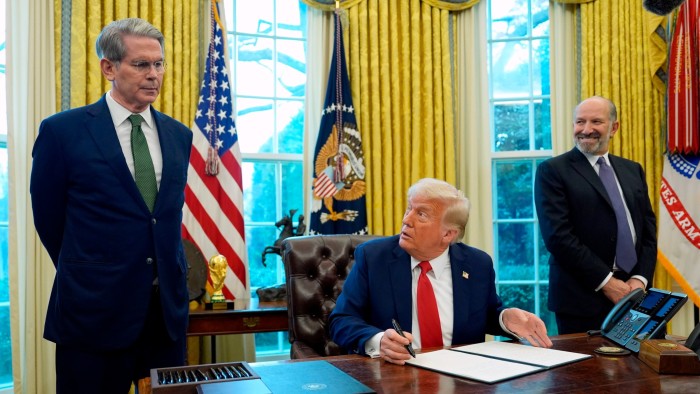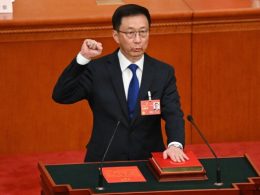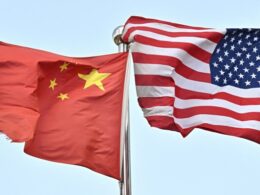Unlock the White House Watch newsletter for free
Your guide to what Trump’s second term means for Washington, business and the world
Last week Donald Trump said the removal of the US Federal Reserve chair “cannot come fast enough”. The president’s desire to sack Jay Powell before his term at the Fed ends in May 2026 was later confirmed by Kevin Hassett, director of the National Economic Council, who said the administration would “continue to study” how to remove him. It was a moment of alarm for constitutional scholars and investors alike. But on Tuesday the commander-in-chief told reporters he had “no intention” of firing Powell. It is not the first time Trump has said something only to row back on it later — and it probably won’t be the last.
What explains the turnaround? The legal route to remove the Fed chair remains obscure. But chaos in financial markets is the more likely cause. After Trump taunted Powell on Monday via his Truth Social platform, the S&P 500, the dollar and US Treasury prices all tumbled. Independent central banks have credibility and an established record in maintaining price stability and anchoring inflation expectations. Trump’s reckless attacks, however, sowed doubts over the Fed’s ability to defend its independence. Following the president’s more conciliatory comment, markets rebounded. Treasury secretary Scott Bessent, who is keen to keep long-term Treasury yields at bay, may have played a role.
It is a relief that Trump has seemingly sidelined, for now, any plans to remove Powell. The Fed is at an awkward moment in its rate-setting cycle. Continuity is important. The central bank is, understandably, holding rates as it tries to weigh the stagflationary effects of Trump’s protectionist agenda. Cutting rates now, as the president desires, could add inflationary pressures just as higher import duties filter into the US economy. But if the negative growth effects of levies are overpowering then rate cuts might be in the offing. Trump’s stop-start tariff agenda only makes the Fed’s calculus harder.
Indeed, there was a further U-turn from the White House on Tuesday. Bessent said the trade war with China was “unsustainable”, and the president claimed that he would strike a deal to reduce levies on the country “substantially”. This marks a notable climbdown from weeks of heated rhetoric against Beijing. Even after the president delayed his “reciprocal” tariffs — following market ructions and Bessent’s advice — investors were still concerned that America’s effective tariff rate would remain elevated given the three-digit duties on China.
It is tempting then to believe that markets and the Treasury secretary can keep the president’s most extreme economic plans in check. But that is wishful thinking. The administration has decided to correct course only after destroying trillions of dollars in wealth and stoking unease in US government bond markets. The White House itself also seems unable to keep pace with the president.
Concerns over the Fed’s independence are not resolved either. Trump has been goading the central bank since his first term. His public criticisms aren’t easily forgotten. With Powell’s term as chair ending next year, markets will fret that the president’s nomination for his successor may be more pliant. That is enough for investors to doubt the Fed’s continued credibility, and raise inflation expectations.
Close to 100 days into his second term, nobody — perhaps not even his closest advisers — is any wiser on whether to take the president’s words at face value, as a strategy to extract concessions, or something in between. For now, the White House’s policy retreats and postponements provide temporary relief for markets. But the unpredictability of the president has already undermined the reputation of US assets and institutions. That won’t be easy to reverse.
Source link









